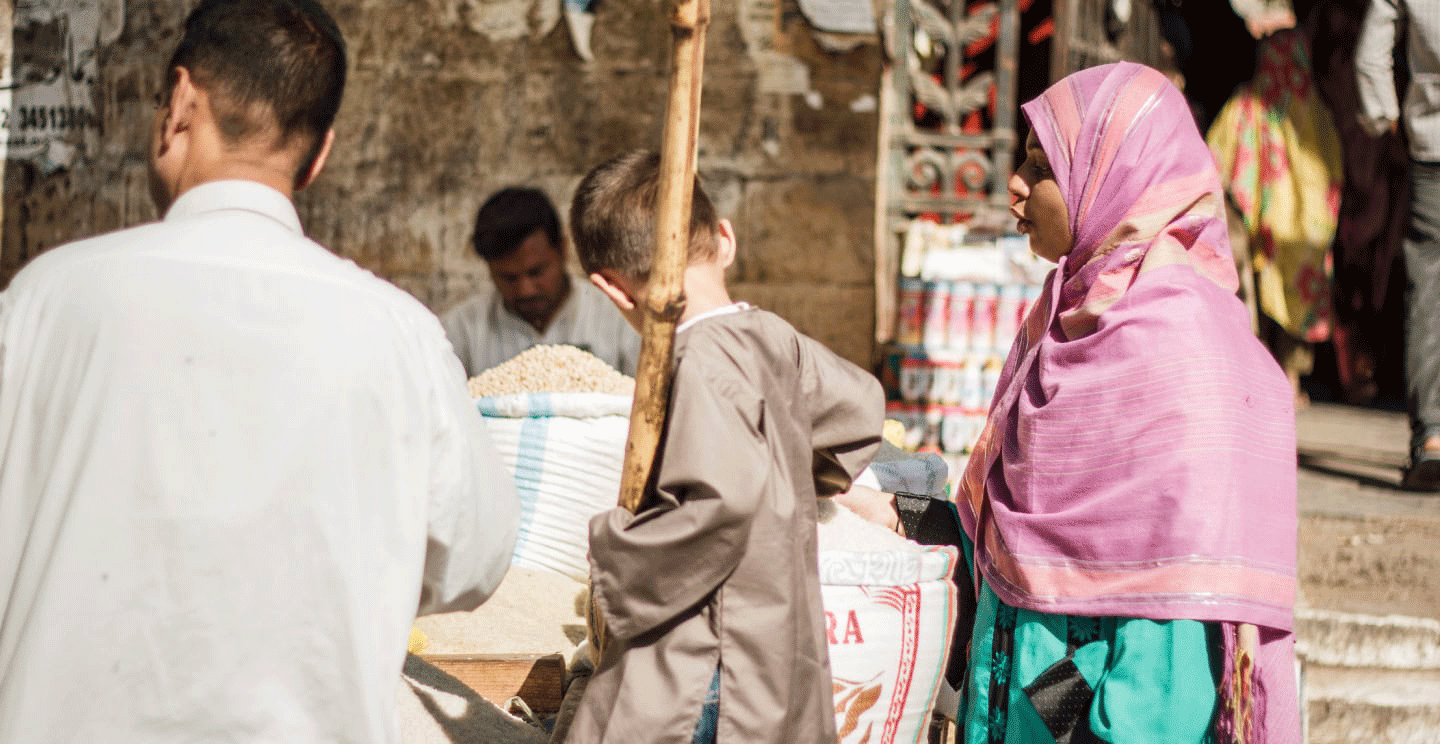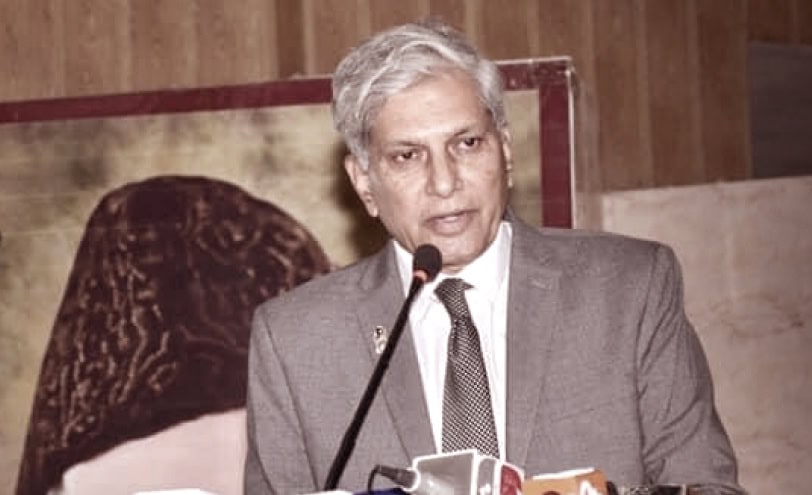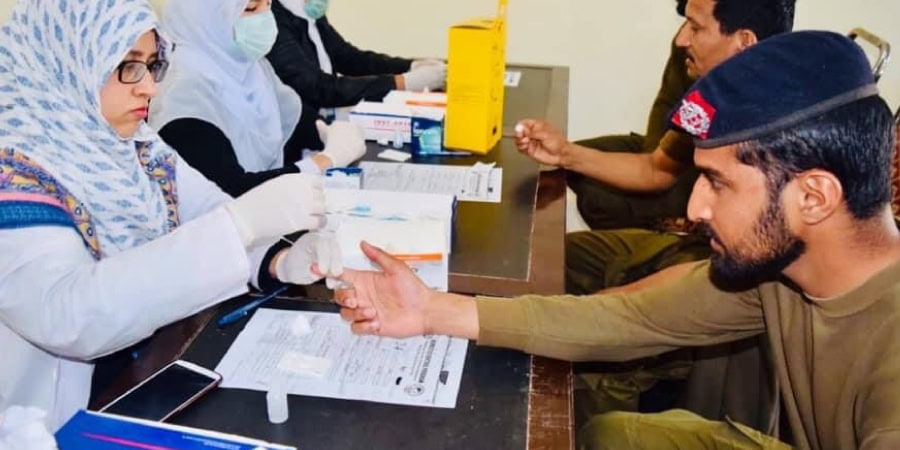
Major (r) Anwar ul Hussain Alvi shares his victorious triumph over hepatitis C, and how it has given him the purpose to help others and improve the management of the disease in Pakistan. Today, he is on the Technical Advisory Group in the government of Pakistan where he leads various awareness campaigns and sets up multiple testing services throughout the country.
The diagnosis of hepatitis C was very unexpected for Anwar Alvi. Having first been diagnosed with appendicitis, Anwar Alvi was admitted to the hospital in 1998. For a fairly short and routine procedure like an appendectomy, nothing worse was expected. However, an error during this routine procedure led to a switch from an appendectomy to a complete colostomy. To make matters worse, his open surgical wound led to him contracting both tuberculosis (TB) and hepatitis C. However, he remained unaware of this and his health deteriorated further.
From August 2007 to April 2009, he was dealing with TB and hepatitis, lost more than 23 kilograms, was unable to walk without support, and suffered significant damage to his liver – to the extent that a liver transplant was his only option for survival. However, many doctors said that due to the immense strain on his body from his previous ailments, it would be very difficult for him to heal and surviving a liver transplant would be nearly impossible.
Despite hearing such devastating news, Anwar Alvi stood strong and battled every challenge that came his way. His determination to survive led him to search for a surgeon willing to perform the liver transplant. He finally found a surgeon in India. 15 May 2009 – A day Anwar Alvi will never forget – his son, Mr Muhammad Irfan ul Hussain Alvi, was his donor, and he underwent the liver transplant with the support of his doctor and family.
“In my journey, I’ve been deeply grateful for my family’s unwavering support. However, not many patients have what I have. I hope to bridge this gap, to ensure that every person facing health challenges receives the holistic care and resources they need to thrive. ”
Anwar Alvi often mentions how important his family was during this journey and that he is incredibly grateful for their support. This is his motivation and life’s mission- to empower and encourage as many hepatitis patients in Pakistan as he can.
Understanding and managing hepatitis C in Pakistan

Anwar Alvi realised that, even in the late 2000s, there was little to no awareness of how hepatitis C occurs and how it can be managed.1 This is especially concerning as some everyday activities can cause hepatitis. A study by Asian Medicine, conducted in the Islamabad–Rawalpindi metropolitan area, the fourth-largest metropolitan area of Pakistan, showed that most patients with hepatitis C had visited barber shops where old-fashioned razors are used. Also, a routine checkup at the dentist may make anyone a hepatitis C Patient due to the lack of sanitation.2,3 With nearly 9 million patients suffering from hepatitis, more must be done to improve both awareness levels and testing rates in Pakistan.4
All this is worsened by the high levels of stigma surrounding hepatitis C. Many patients often feel like they are treated differently by their loved ones and colleagues once they reveal their diagnosis.5 In another study conducted in Rawalpindi and Islamabad, nearly 20% of 140 patients reported feeling their loved ones alienated them and avoided conversations.6 Female patients are often questioned about such a diagnosis and many worry about it spreading to their future children.7 Such behaviour towards patients may discourage them from getting regular screening and treatment.
With timely diagnosis and proper treatment, hepatitis C is curable.8 However, due to these barriers, it is left undetected and untreated.
From 2015 to 2019, there was a 5% increase in the number of deaths related to hepatitis C in Pakistan.9 This set off alarm bells and led to the creation of a nationwide vaccination and testing program that aims to test as many Pakistanis as possible. The National Hepatitis Strategic Framework was launched in 2017.

While this program significantly increased the testing and timely diagnosis rate for many individuals, it was still widely city-based in the Punjab and Sindh regions.10 Over 60% of the Pakistani population resides in remote and rural areas.11 These areas not only have fewer facilities and access to healthcare services but in general, many of the residents here have never even heard of this disease.
Hence, to enhance the program further, the Technical Advisory Group within the Pakistani government started playing a stronger role.5
Mitigating the challenges against effective disease management in Pakistan
The lack of funding often derails the efforts of the Advisory Group and prevents them from reaching the more remote areas in Pakistan. This is where multi-level stakeholder engagement becomes key. By working with global organisations such as the World Health Organization (WHO), leveraging collective resources, and learning from other countries such as Egypt and Japan, Pakistan can learn how to effectively implement micro-elimination programs.
Anwar Alvi was an essential part of the Advisory Group where he led awareness campaigns all over Pakistan. These campaigns included speeches from clinicians and healthcare workers and informative pamphlets to educate individuals. As part of his lifelong dedication towards eliminating hepatitis C in Pakistan, Anwar Alvi used these campaigns to make everyone realise the importance of regular screenings and that with a timely diagnosis, they can beat this disease.
To him, it was important to address the situation with a two-pronged approach.Firstly, to address the main cause behind such high rates of infection, he encouraged safe and hygienic practices. Secondly, to decrease the infection rates, it was necessary to push individuals to get tested. While contributing to the Technical Advisory Group, Anwar Alvi also set up his organisation, LiverCare Society Pakistan, where he conducts awareness programs and helps patients by providing emotional and monetary aid. The LiverCare Society has been involved in testing programs in different parts of the country and also provides patients with treatment options beyond just Pakistan.12
“Everyone deserves good health and must have the strength and conviction to fight against anything that comes in their way.” Anwar Alvi has dedicated his entire life towards helping people and achieving new frontiers for liver disease management in Pakistan, and he will continue to do so. The work of Patient Advocacy Groups such as that of Anwar Alvi’s is essential for bridging the gap between patients and healthcare services. With stronger partnerships and more targeted efforts, the battle against hepatitis can be won.
References:
- Sohail, A. (2023). Awareness and Prevalence of Hepatitis B and C in Rural Areas of Lahore, Pakistan. IntechOpen. doi: 10.5772/intechopen.109192
- Waheed, Yasir & Saeed, Umar & Safi, Sher & Chaudhry, Waqas & Qadri, Ishtiaq. (2010). Awareness and risk factors associated with barbers in transmission of Hepatitis B and C from Pakistani population: Barber’s role in viral transmission. Asian Biomedicine. 4. 435-442.
- Saleem U, Aslam N, Siddique R, Iqbal S, Manan M. Hepatitis C virus: Its prevalence, risk factors and genotype distribution in Pakistan. European Journal of Inflammation. 2022;20. doi:10.1177/1721727X221144391
- Ochani S, Ochani K, Ochani A, Vohra LI, Ochani S, Hasibuzzaman MA, Ullah K. Hepatitis is still a major health concern in Pakistan: short communication. Ann Med Surg (Lond). 2023 Sep 5;85(11):5820-5822. doi: 10.1097/MS9.0000000000001280. PMID: 37915649; PMCID: PMC10617882.
- Nemati, Ali & Nemati, Sarah & Javed, Wasmiya & Javed, Taimoor. (2021). IMPACT OF SUPERVISOR SUPPORT AND HEPATITIS C STIGMA ON EMPLOYEE PERFORMANCE WITH MEDIATING EFFECT OF SELF EFFICACY AND PREJUDICE: EVIDENCE FROM PAKISTAN. The Rehabilitation Journal. 05. 258-262. 10.52567/trj.v5i02.90.
- Rafique I, Saqib MA, Siddiqui S, Munir MA, Qureshi H, Javed N, Naz S, Tirmazi IZ. Experiences of stigma among hepatitis B and C patients in Rawalpindi and Islamabad, Pakistan. East Mediterr Health J. 2015 Feb 2;20(12):796-803. PMID: 25664518.
- WHO EMRO | Experiences of stigma among hepatitis B and C patients in Rawalpindi and Islamabad, Pakistan | Volume 20, issue 12. Retrieved from: https://www.emro.who.int/emhj-vol-20-2014/volume-20-issue-12/experiences-of-stigma-among-hepatitis-b-and-c-patients-in-rawalpindi-and-islamabad-pakistan.html#:~:text=Stigma%20related%20to%20hepatitis%20occurs,their%20gender%20roles%20(16)
- Hepatitis C. Retrieved from: https://www.who.int/news-room/fact-sheets/detail/hepatitis-c#:~:text=With%20proper%20treatment%2C%20many%20people,with%20chronic%20hepatitis%20C%20infection
- Ochani S, Ochani K, Ochani A, Vohra LI, Ochani S, Hasibuzzaman MA, Ullah K. Hepatitis is still a major health concern in Pakistan: short communication. Ann Med Surg (Lond). 2023 Sep 5;85(11):5820-5822. doi: 10.1097/MS9.0000000000001280. PMID: 37915649; PMCID: PMC10617882.
- National Hepatits Strategic Framework (NHSF) for Pakistan 2017-21. Retrieved from: https://www.globalhep.org/sites/default/files/content/resource/files/2020-02/National%20Hepatits%20Strategic%20Framework%20%28NHSF%29%20for%20Pakistan%202017-21.pdf
- Pakistan Rural population, percent – data, chart | TheGlobalEconomy.com. Retrieved from: https://www.theglobaleconomy.com/Pakistan/rural_population_percent/#:~:text=Rural%20population%2C%20percent%20of%20total%20population&text=The%20latest%20value%20from%202022,196%20countries%20is%2038.97%20percent
- Pakistan Health Research Council (2018, July 12) Retrieved from: https://www.thenews.com.pk/amp/379756-pakistan-health-research-council














